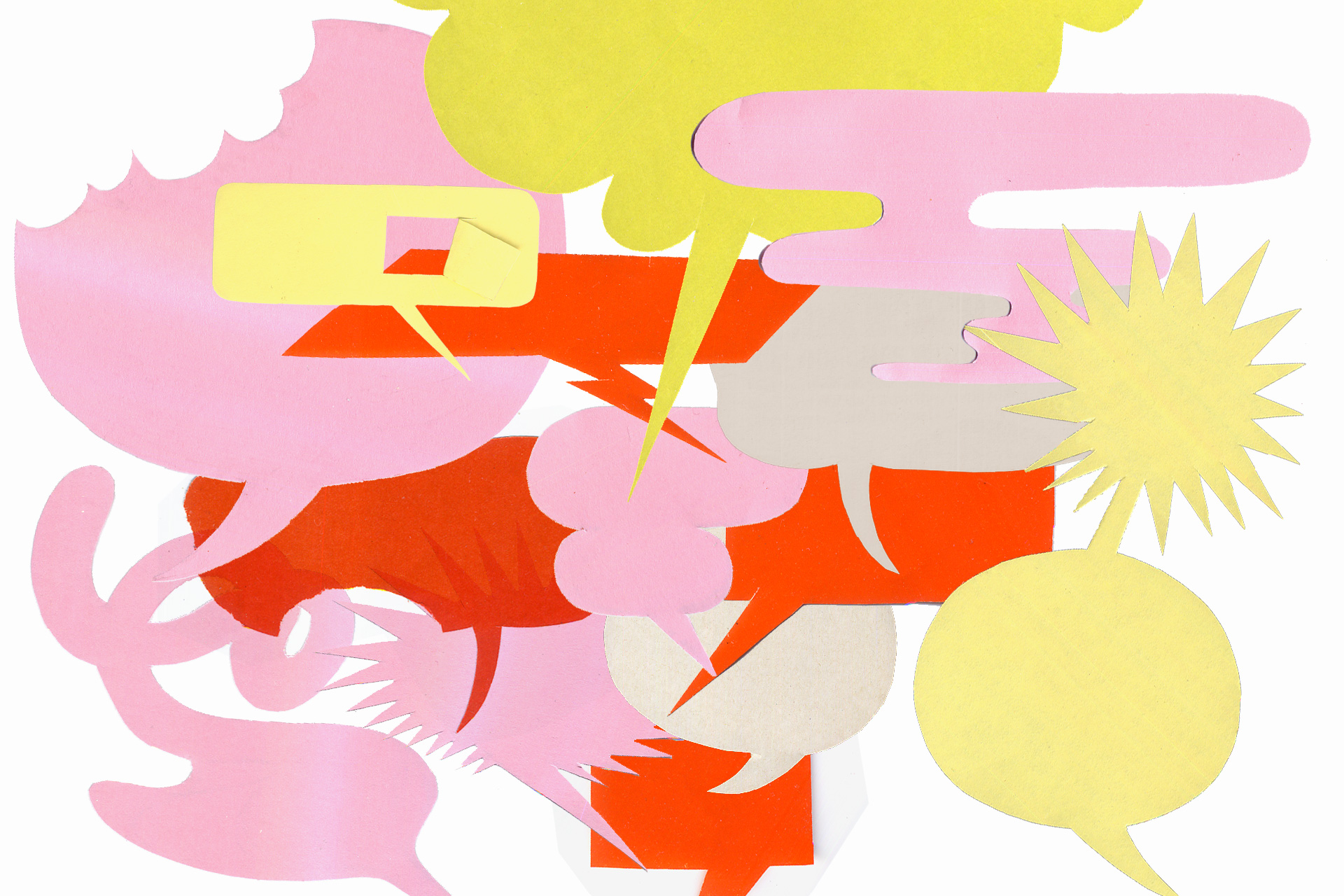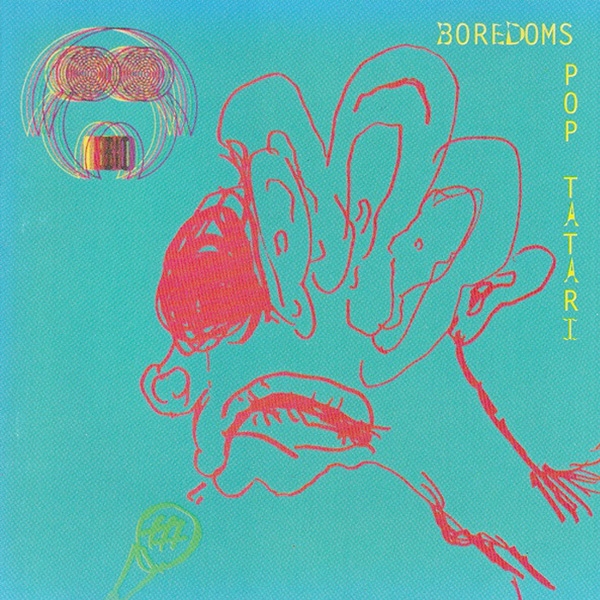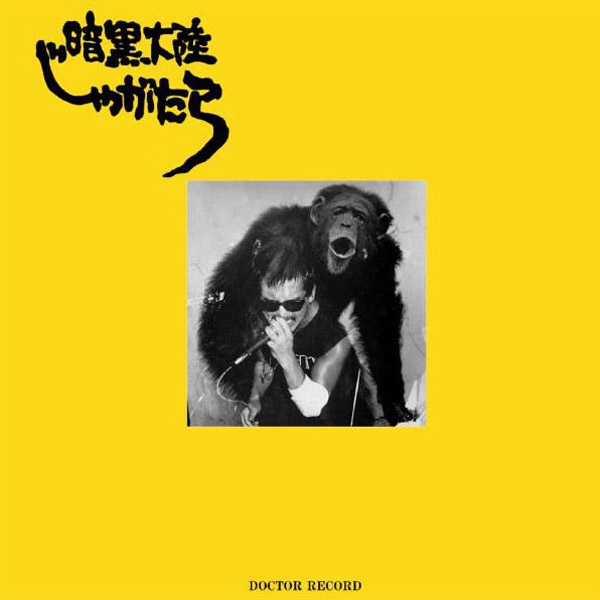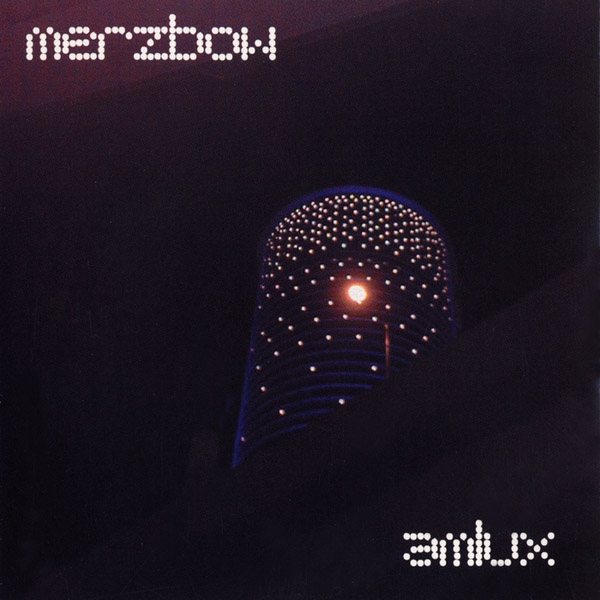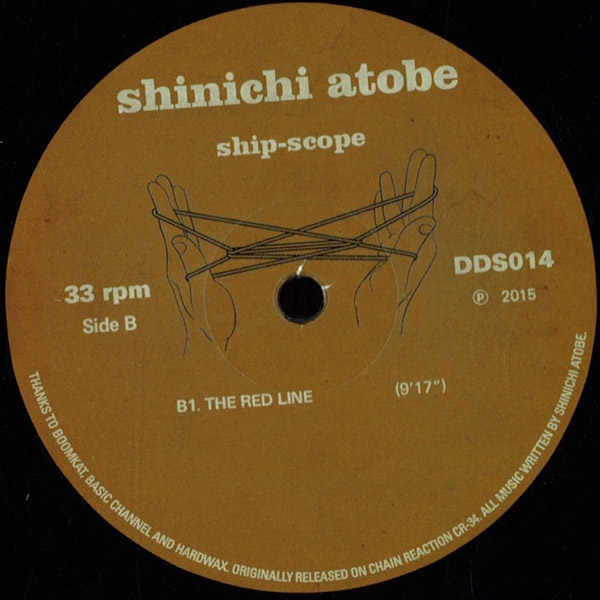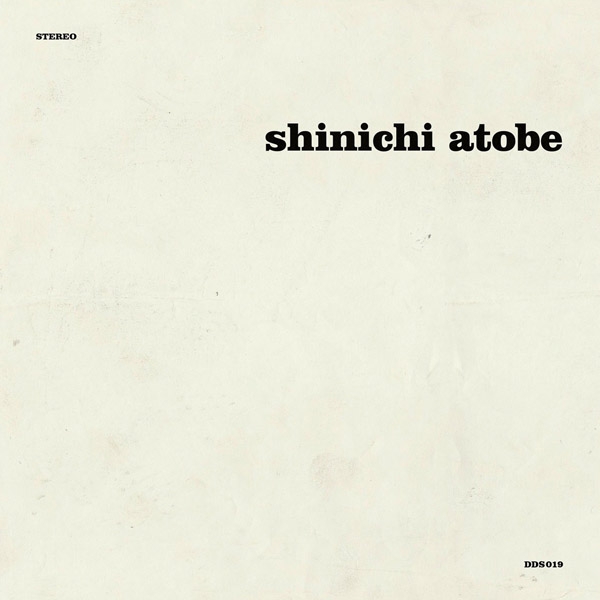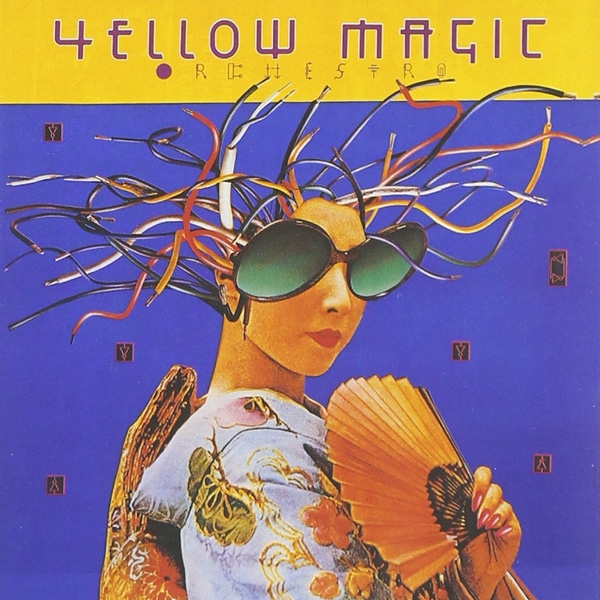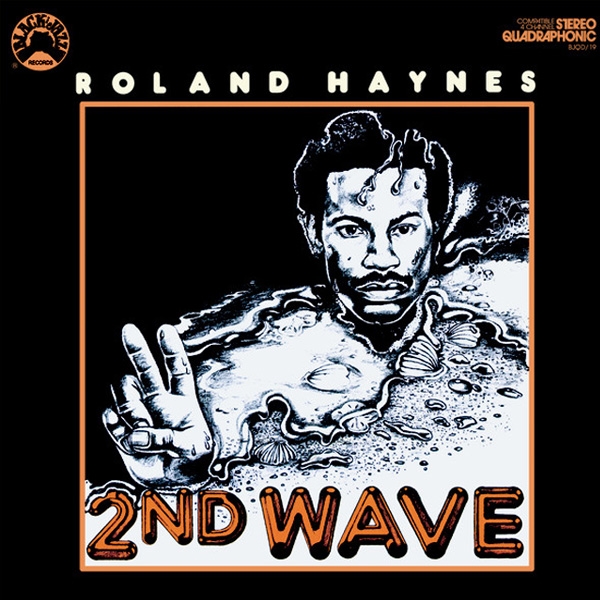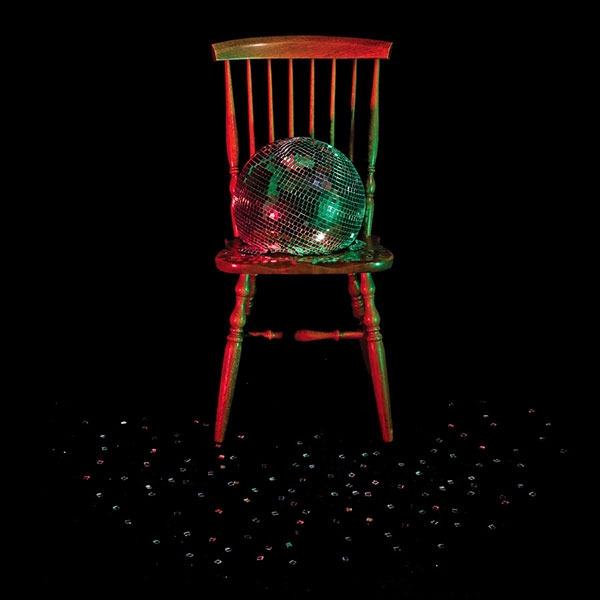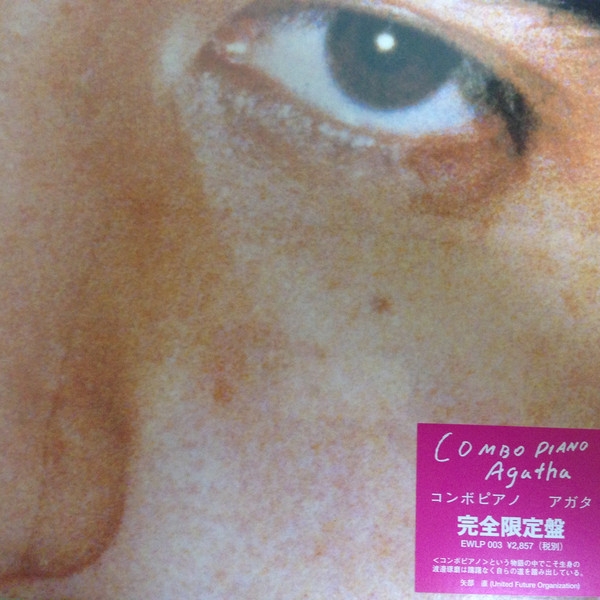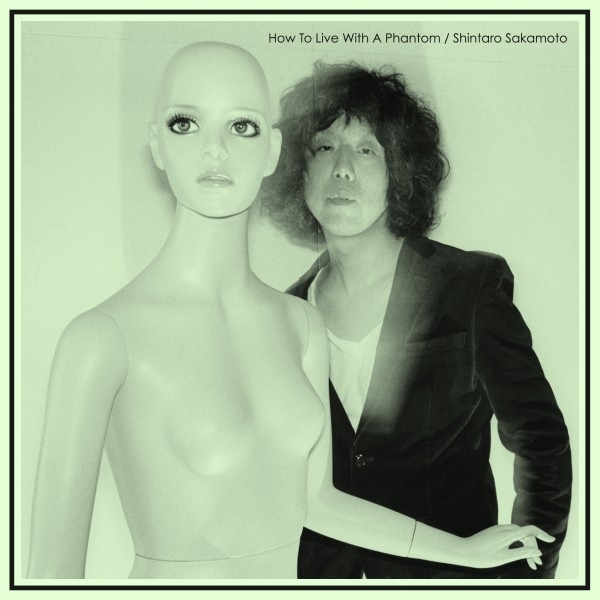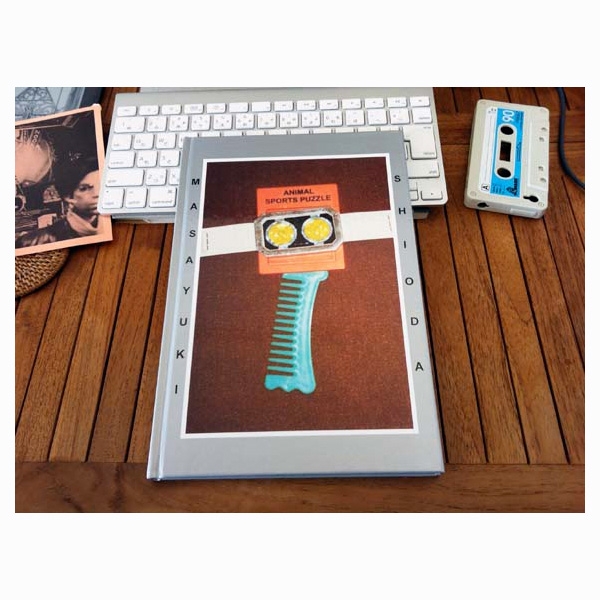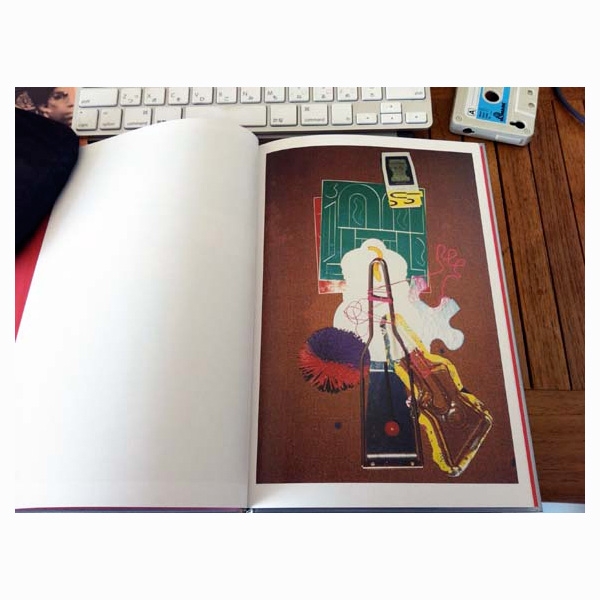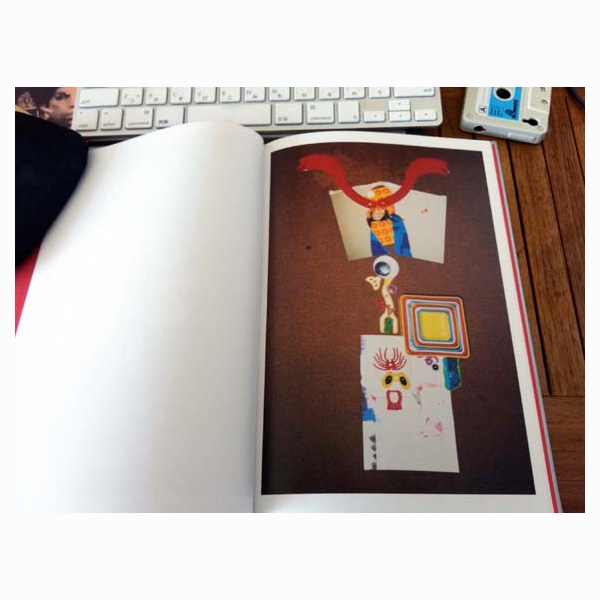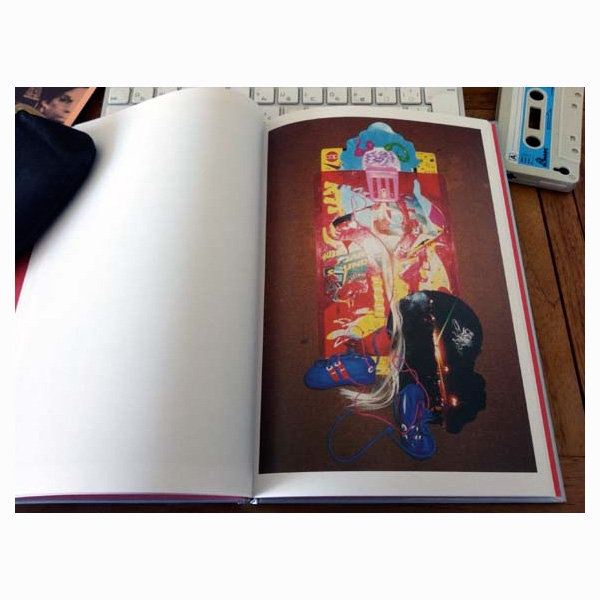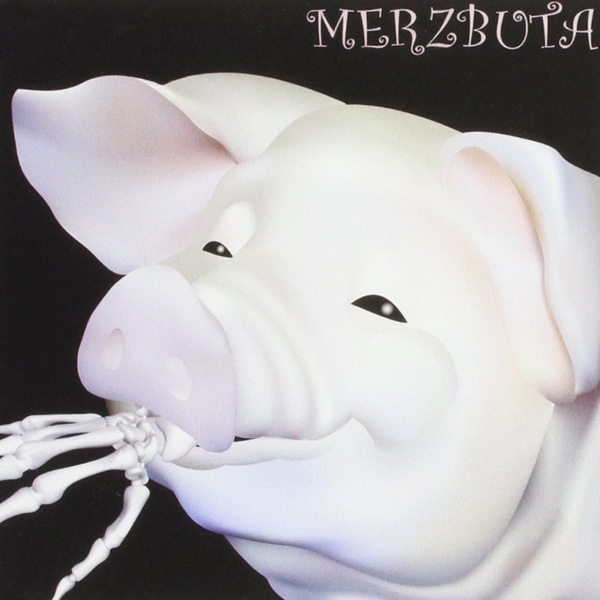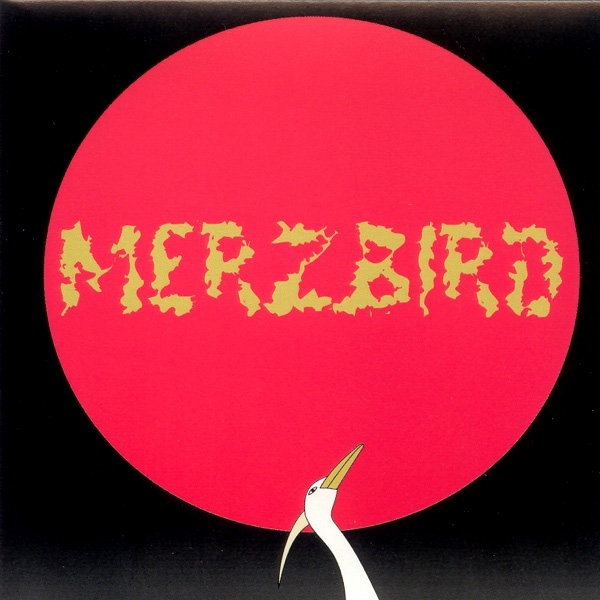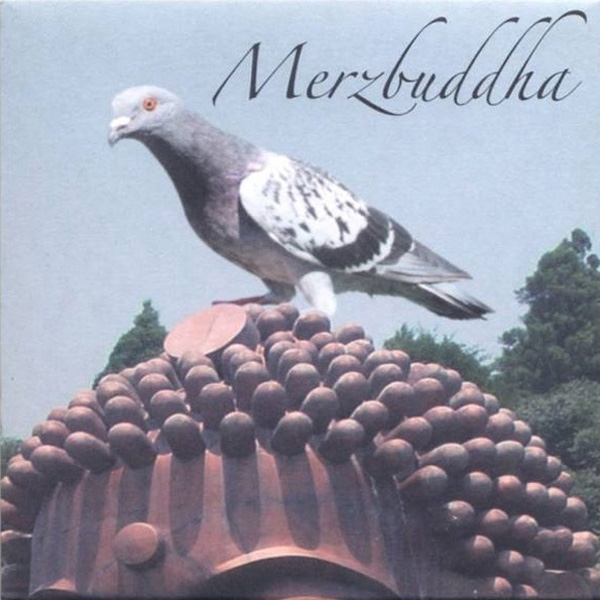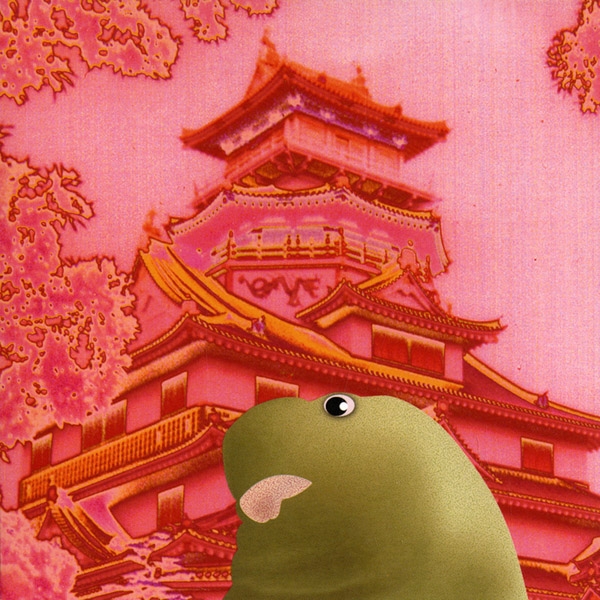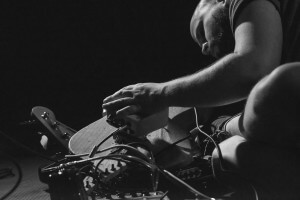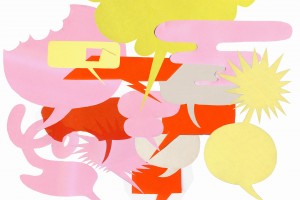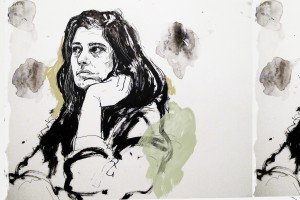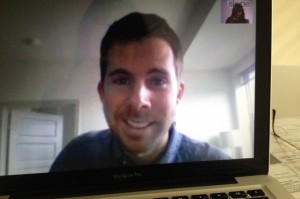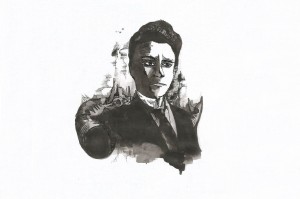A virtual, aural and oral chat
between Izumi Takahashi and Abraham Araujo
about sounds, and the other music.
We are living at a time when the construction of huge walls is being announced, both in the present and in the –supposedly promising– future. But there is something visibly powerful, which has been palpable for hundreds of years, that clearly points more toward progress than toward anything else. You can call it music, arts, design, sense of humor, sex … any of them. Those things connect people.
How could you communicate with a perfect stranger? Someone who comes from a distant country, speaks another language, reads and writes in characters completely different from yours, and would logically be more than lost, culturally, in a place like the city of Caracas.
My guest in this multimedia interview and virtual reference chat is Izumi Takahashi, a self- taught nomad photographer and freelance editor, with an eye for cityscapes and a curious music digger. He comes from the Shibuya district (Tokyo), and after having been practically all over the world, he landed almost by accident in Venezuela. Strangely captivated by our chaos and diversity, he decided to spend a substantial season in Caracas between 2016 and 2017.
In addition to sharing similar opinions regarding counter-culture, arts, and music, a curiosity for sound and the visually stimulating was our guide through this spontaneous conversation. Rather than theorize or intellectualize, this curiosity prompted us to take an audio-visual walk between artists, forgotten scenes, and musicians that impacted or resonated with us. We also compared our cultural contradictions and similarities. Neither of us knew the language of the other; our common languages were English and music.
The resulting interview (below) has been divided into several sections. The invitation is to immerse yourself comfortably in the exchange with the help of a good sound system or, at least –if you have it in hand– a decent pair of headphones. Come in and enjoy.
- February 3rd, 2017 – 10:02 PM –
1. FORMULAIC QUESTIONS, GENERIC ANSWERS: Awesome results ✓
Abraham Araujo: Can you tell me your birthplace, and where do you live now?
Izumi Takahashi: I was born in Tokyo and normally live there as well.
AA: So, how did you end up in Venezuela?
IT: You mean like why I came here first time? I was traveling South America from Argentina to Colombia at the time, and I met a friend who was from Venezuela, so I wanted to visit my friend.
AA: Which other countries have you been travelling and working as a photographer?
IT: I’ve been across the United States, Germany, France, Netherlands, Iceland, Spain, Denmark, Malta, Israel, Jordan, Turkey, Brazil, Argentina, Bolivia, Peru, Ecuador, Colombia, Venezuela, Curaçao, Aruba, Trinidad and Tobago.
AA: My god. You’ve been all over, man. All the time taking photos?
IT: No, I started taking photos when I was in Brazil, before that I hated to take a pictures, because sometimes it disturbs the moment.
AA: Yeah I understand, I have mixed feelings about it. Sometimes when I’m travelling, I want to record everything on video, but then sometimes it ruins the whole thing.
IT: Yeah, yeah. I didn’t like to taking pictures in front of the statues or famous things, like a tourist. I started to take pictures in Netherlands and Denmark, but then I lost everything when someone stole my laptop in Berlin.
AA: Aw, too bad. And since then you back up everything on Google Drive and stuff, right?
IT: Yeah, you’re right. Since then I save my pictures on my laptop or a USB stick the same day I take them.
AA: And how many fanzines or photobooks have you published recently?
IT: I made two photobooks. These could be like fanzines as well, because I made them myself and they were not published officially. The name of the books are “Rio De Janeiro/Diamantina”, and the other one is “Movimiento”.
AA: Name from 10 to 5 favorite japanese albums of all time:
IT: Boredoms / Pop Tatari · Jagatara / Nanbantorai · Merzbow / Amlux · Shinichi Atobe / Ship Scope (or World) · Ymo / Ymo
AA: And now 10 to 5 favorite albums in general:
IT: J Dilla / Donuts · Ramp / Come Into The Knowledge · Donald Byrd / Stepping Into Tomorrow or Place And Space (the album which was made by The Mizell Brothers) · Roland Haynes / 2nd Wave. If I have to choose an album J Dilla’s Donuts must be the best for me for some reason.
- February 3rd, 2017 – 10:25 PM –
2. «Ok, enuff of generic questions»
JAZZ CATS WHO JUMPED INTO THE DISCO WAGON
AA: Oh man, Donald Byrd! I love his late incursion into disco. Later, he made the big jump from jazz to disco.
IT: I don’t know much about the time he played disco. But these two albums are incredible for me.
AA: Yes, and on the other hand, a lot of people universally tend to choose J Dilla’s Donuts for some special reason. I think it’s the “common ground record” that people agree for strong reasons. It’s such a positive album, even when it was partly made in some critical conditions (1).
IT: Yeah, with Donuts a lot of people from different musical backgrounds tend to connect with each other. And, speaking of Donald Byrd, the production team was The Mizell Brothers. They created only a few albums like that, with Bobbi Humphrey, Jonny Hummond: 3 Pieces. They recorded with great studio musicians like Chuck Rany, Harvey Mason, the whole BNLA (Blue Note L.A.).
AA: Except for Bobbi Humphrey, I’m not that familiar with the albums that you mentioned. But I’ve heard Donald Byrd was a bit criticized for «betraying» jazz cats and purists followers from that era.
IT: Well, you know, people who love jazz hate these albums ha hah.
AA: Haha, yeah, I know what you mean. Did they have a special division for the West Coast Blue Note? (in L.A.) ?
IT: I think so, the logo was different, and at that time jazz became a pop phenomenon. I guess they made another division for Blue Note
AA: Interesting fact. (By the way, check out the track «Love Has Come Around» by Donald Byrd:)
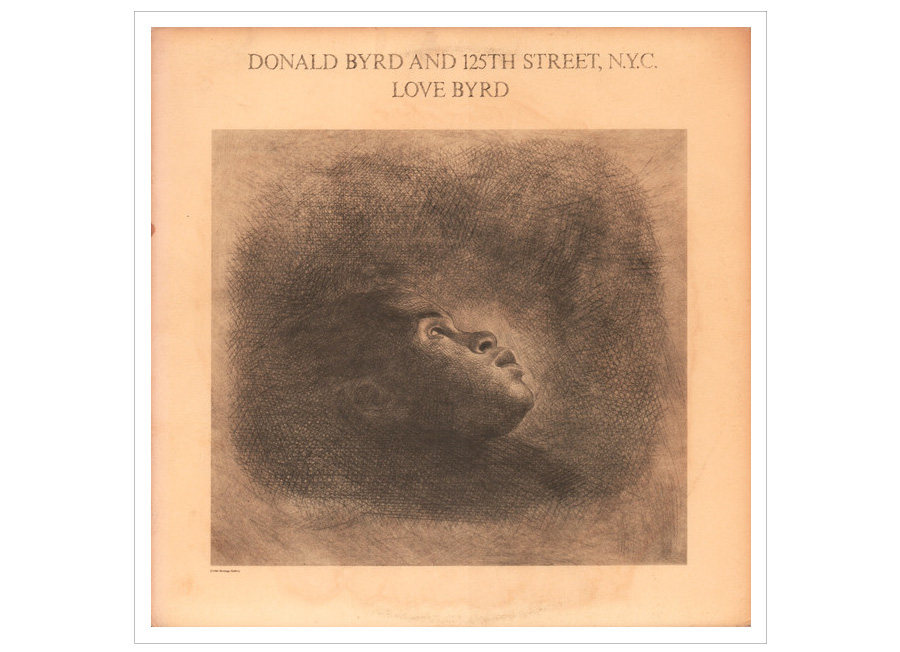
AA: Some compilations say it was a big Paradise Garage classic, mixed by Larry Levan among others on the dancefloor.


IT: It was before the fusion jazz period. I don’t like fusion jazz that much, but what The Mizell Brothers made, is for me the best between old jazz and the sound of fusion jazz.
AA: How is this fusion jazz like?
IT: It could be like Weather Report and Casiopea (a Japanese band). I used to hate them, but it doesn’t sound so bad to me now, hahaha. I think hip-hop and house artists love it, they sample it a lot.
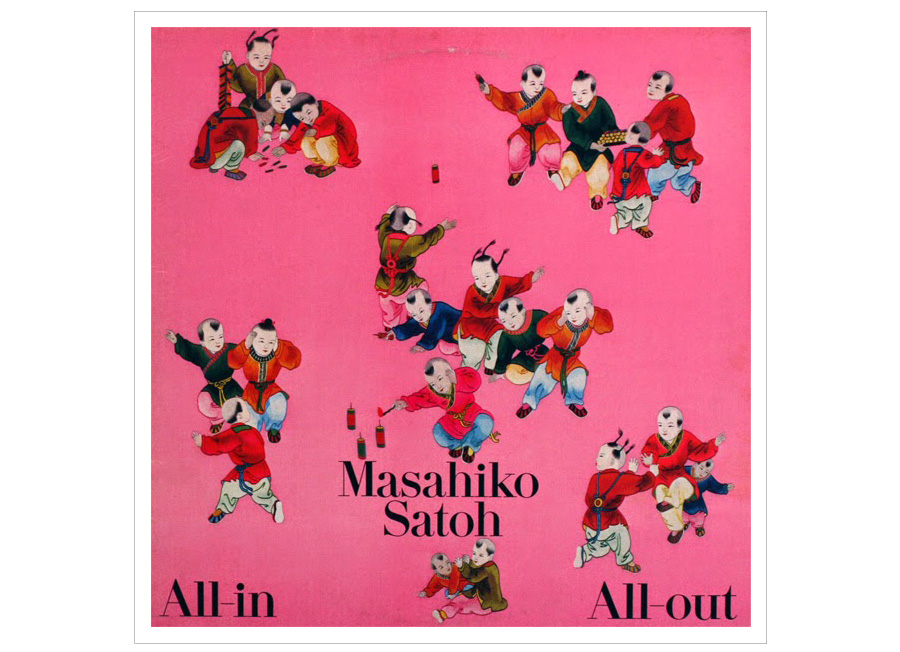
AA: I know, there’s a certain type of jazz that sounds to me a bit like «progressive rock,» and it’s hard for me to get used to it haha.
IT: That Donald Byrd song is so nice!
AA: Yeah, it’s superb. Later on, in recent years, all of these next generation DJs from UK and Berlin, started to give a new life to the track in the lesser-known club circuit.
- December 9th, 2016 – 03:25 PM –
3. «Signatures and creases in Caracas»
IT: I find that there are so many creases («arruga” in Spanish) in the city. That’s why it’s an interesting place for me.
AA: Creases? What do you mean, like in the streets?
IT: It’s like opposite of flat. Like when you see the sheets on your bed after you wake up, you can find arrugas right?
AA: Yeah, I kind of have the picture of the word in my head. Perhaps it has to do with the fact that everything in Japan is more structured and organized?
IT: It’s difficult to explain, but I’ll try. Comparing it to Japan: things in general, people, are so flat. When you eat Dorito’s, sometimes you’ll find one piece that is very salty and the next one will not be. I mean, even with Dorito’s, each part doesn’t have the same taste.
AA: (Ok, this example is accurately funny, but i’m still trying to make the connection).
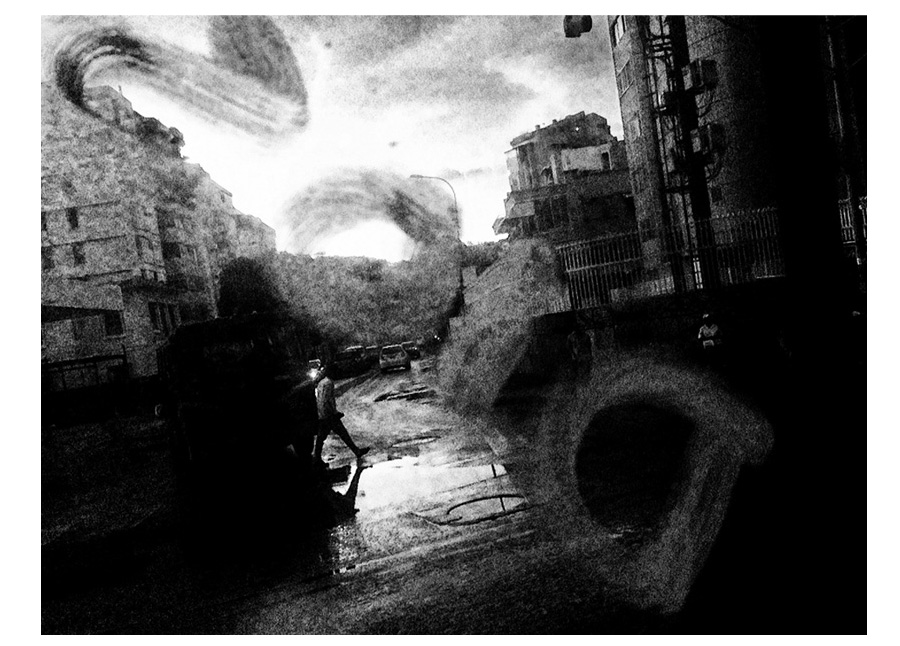

AA: But I remember a couple of things you said some days ago; and it might have to do with the fact that here everything is a bit messy, unplanned and disorderly. Perhaps there are more textures, which makes it the opposite of flat, right?
IT: All the Japanese Dorito’s have the same taste. There is no saltiness, and even the shapes are always the same. We are all “chinos” (I say this to go along with the metaphor). There is also a wider difference between things here, as in the social contrasts between the poor and the rich.
AA: Man, that was a really good way to put it into perspective.
IT: A building initially looked good, for example, but now it looks abandoned and dirty.
AA: So you think, maybe, that here there’s more chance for the «element of surprise».
IT: It could be a fertile ground to make something happen. There are so many kinds of people here.
AA: Awesome. I feel this as a sort of compliment for this place, but coming from another perspective. Those are good metaphors indeed.
IT: I am still looking for what arruga is. I think I saw something on the street, but I cannot grasp it exactly yet. And, yeah, maybe I can find something like arruga in the buildings or in the light of the city. Something there is still between alive and dead. The situation here sometimes feels like it’s breaking.
AA: You mean like, constantly?
IT: Yes. It’s not absolutely broken, but it’s not completely fine.
AA: Maybe it has a lot to do with the constant instability of things surrounding us.
IT: Masayuki Shioda is like that www.amalaworld.com/?tid=6&mode=f8.
People say he captured the noise from the streets, so I think he could have a similar idea.
IT: I think I recommended you this artist called Tomoo Gokita www.tomoogokita.com. He is a friend of Masayuki Shioda. They belong to the same group as my friends, though I’ve not met the artist yet. They are kind of new generation, I think.
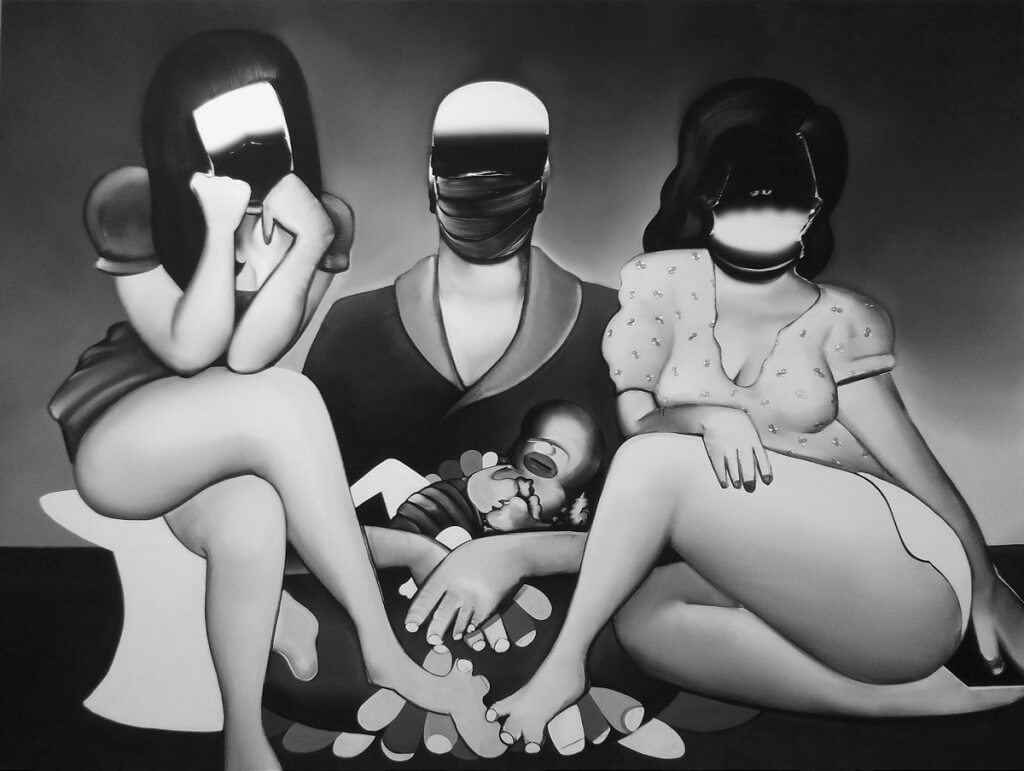
AA: Looks awesome! Yeah, that’s what I perceived on both works.
IT: I want people in Venezuela to know about these kinds of things, because the majority of people only know Japan through anime, bukkake, hentai, and sushi, hahah.
AA: Hahaha, yeah. Same as with arepas, Misses, and Chávez –that bastard is well known even in Mars hahah.
- December 19th, 2016 – 11:37 AM –
4. MERZBUDDHA
AA: Hey, I was going to share this fact with you and I almost forgot about it:
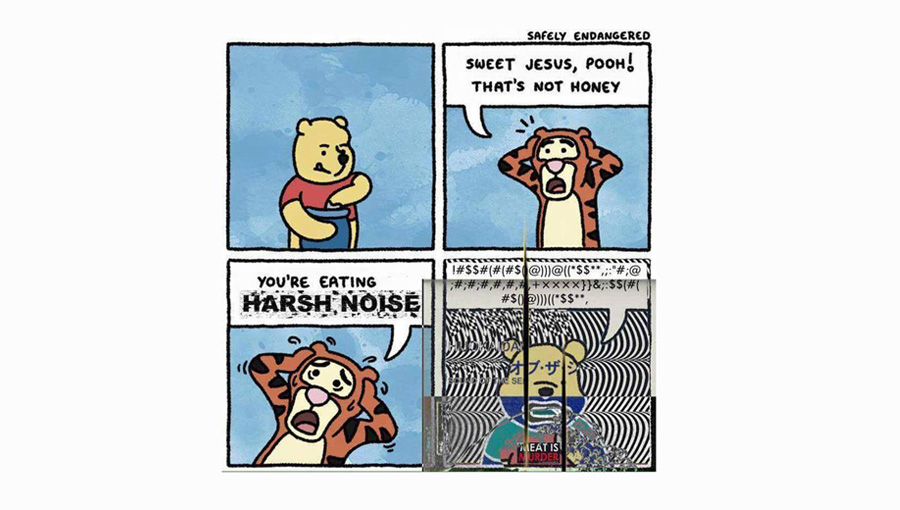
IT: Hahaha, yeah, he is vegan!
AA: Haha, yeah, his birthday was just days ago too. I didn’t know the guy was a bit of an elder already.
IT: I tend to listen to his music sometimes when I’m doing something related to my work.
AA: Woh, I’m not sure if I could listen to his stuff while working. Well, perhaps some of his recent stuff, which involves a different sound, like «dub» and weird electronics… but I don’t think the harsh stuff would make it easy for me to be clicking away at the computer.
IT: Maybe what I’ve been listening to is his old stuff, and it takes me somewhere else… like into some sort of sea of noise, where there is no ups or downs, right or left. It helps you feel something that’s coming from the inner self. I want to check the new stuff out, but he has released too many. Can you send me some of the latest?
AA: That’s an accurate way of describing the work of Masami Akita (also known as Merzbow) (2)
Did I tell you I saw him live a couple of different times? I think one of my favorite periods was his collaboration with Russell Haswell, a musician I personally enjoy a lot. The project was aptly named Satanstornade.
IT: Wow! You saw him live? Listening to this kind of music could be like when we were inside of our mother’s womb before we were born. Not to think, and just feel.
AA: Yes, and the albums I’m referring to are those released between 2002 and 2005. He has an interesting way of playing with the word itself, and the titles are really interesting to me: Merzbird, Merzbeat, Merzbuddah, Merzbuta.
I also read somewhere that we perceive only bass frequencies when we are inside the womb. His remixed work by other known unknown artists belongs to some other interesting period: www.discogs.com/es/Merzbow-Ikebana-Merzbows-Amlux-Rebuilt-Reused-And-Recycled-Promotional-Sampler/master/13600
There’s a Venezuelan musician who had some records with him, and other things recorded live: www.discogs.com/Merzbow-Carlos-Giffoni-Jim-ORourke-Electric-Dress/release/957369

IT: Some time ago there was a stupid Japanese TV show that invited guests to teach the comedian how to make noise music. The teachers were Boredoms, Arto Lindsay, Bouryokuonsengeisha, and also some local punk musicians. It’s in Japanese, but you could enjoy it: www.youtube.com/watch?v=vGL00Z7v_wA
AA: WTF! even Arto Lindsay! Man these things are GOLD. This is like the greatest idea EVER, even if the TV show was stupid, the idea is one in a million.
IT: There was a first part of the show in which Masami Akita played. I cannot believe that the program was broadcasted on prime time (at 7:00 pm) in 1992. I don’t know who could have watched that ha ha.
AA: Haha that’s nuts to see Masami in a TV show on prime time.
- January 22th, 2017 – 06:02 PM –
5. «BANG ON-A-CAN: Kraut Und Kosmische»
AA: Check out this little story illustrated piece on Damo (Suzuki) when you have the time www.redbullmusicacademy.jp/features/damo-suzuki-comic

IT: I saw the comic about how Damo joined Can (3). The comic looks so nice. I have heard that at the time he had spent a few years in a European country and planned to go back to Japan, he was playing his guitar and shouting on the street while he was part of the casting for the musical HAIR. He called himself «Dameo Suzuki,» which is from a Japanese comic, but people couldn’t pronounce his name, so that’s how he got his name “Damo.” The name of the comic was «Marude Dameo,» which translates as «totally useless man».
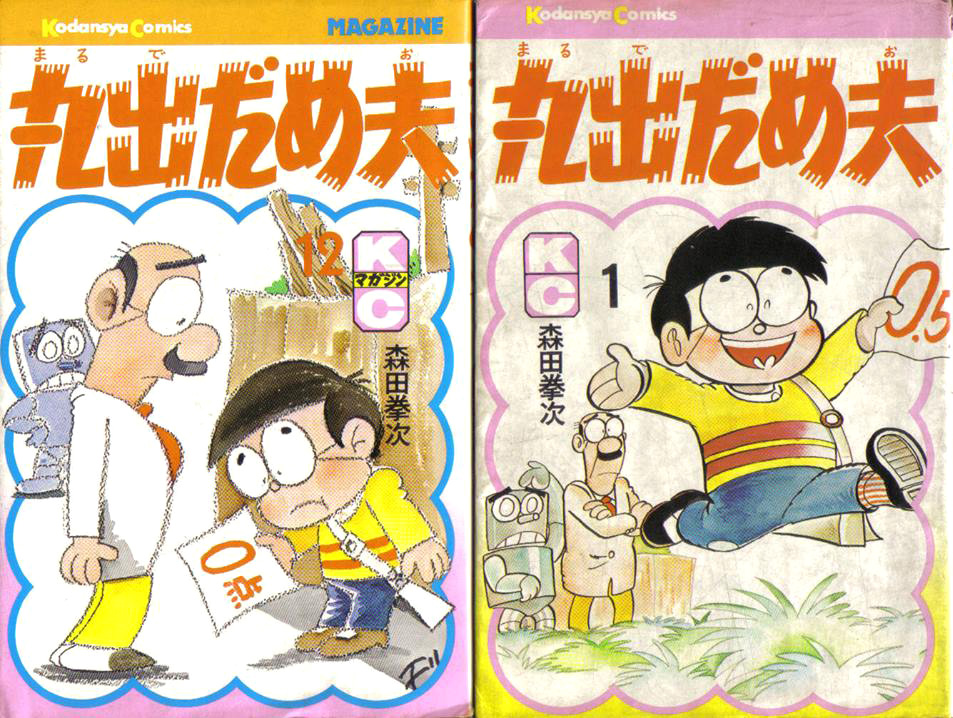
AA: Amazing tip!
Have you seen their concerts live? They have a famous + not so famous film transferred to DVD, recorded from a concert in Cologne in the 70’s. They had this guy doing jugglery stuff while they were playing, it was quite atypical, even for psychedelic bands from that era.
IT: It’s nice to do a show with something like juggling; it could create a good chemistry. I checked out some live videos of Can. They look like psychedelic rock or progressive rock concerts.
AA: Definitely, that’s perhaps the main thing with Can: that some progressive fans might love Can at some point because of the typical progressive rock signatures, but at the same time it’s a band that tried to escape any sort of classification. And their attitude was not at all like the «professional» musicians with a progressive rock background.
The length of the songs, all the musicians playing at once, the psychedelic sound… but the attitude is not like: «Ok, this is US and we’re gonna give you a god-damn 15-minute-arena-concert-guitar-drums-solo» haha. That’s the attitude that I find annoying in any of those progressive bands, and, as a result, in their sound as well.
Can even had a «disco» song! Which was somehow, at some point, a bit popular on the radio. I remember one time I was DJing in Maracaibo, and some old guy came over and shouted at me, through the blasting music with really weird eyes and voice: “¡V I T A M I N A C!” I never really understood it. But years later, someone told me that the track was heavily played on the radio in Venezuela, and that the single was widely released, even in Argentinaand the rest of South America.
IT: And at the same time, some electronic movement was coming up as well, like NEU! and Kraftwerk. So all the new and old things were mixed. I didn’t know about the music scene in Germany or about progressive rock, I found out in recent years.
AA: Yeah, I’m kind of lost about when exactly the whole thing appeared in Germany. I think it had to do with Stockhtausen, Luigi Russolo, Xenakis, and all those weird dudes starting to use electronic equipment.
IT: It took me so much time to like Funkadelic (**), even if my first vinyl was theirs. I couldn’t understand how great they were. I needed more than 10 years to like them!
AA: Absolutely. I think it has to do with the fact that they began doing their thing unconcerned about being liked. For example, I remember the first time I watched the P-Funk videos… I was scared as hell, man.
I think it was because of the VH1 videos. For me, when I was a kid, they weren’t so easy to look at –like I didn’t understand any of the costumes, and George sometimes looked like a really ugly lady hahah. He had this massive amount of hair that you didn’t know if it was fake or real, and the platform boots, but at the same time he played «funk,» and I said: “Well, I thought James Brown was funk…” But no, this was like a nasty, psychedelic and kinky way of making funk. Nowadays, you realize all they were doing was throwing a party, hit the record button, and release it as a record!
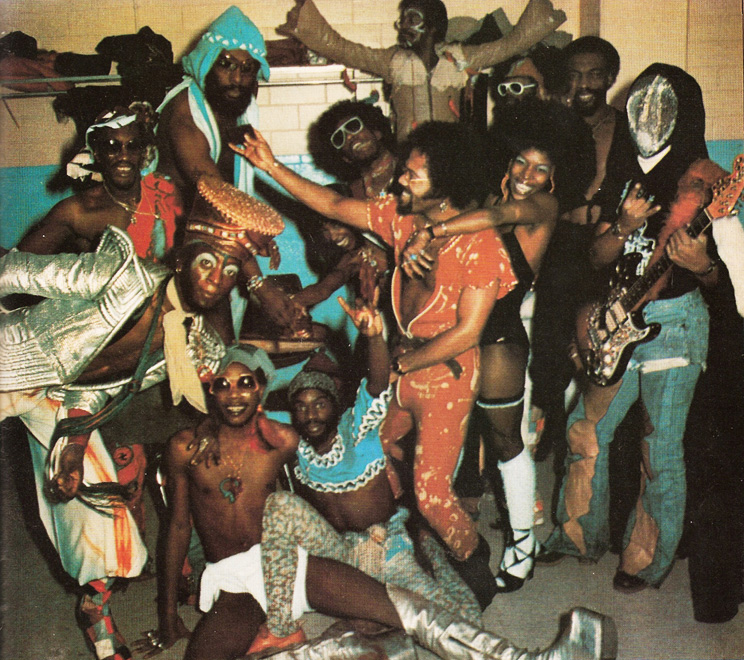
- December 10th, 2016 – 9:18 PM –
6. «0-800-S P A C E – I S – T H E – P L A C E»
IT: I’m figuring out the DJ set for the next party, and I was thinking about playing a bit of Sun Ra (**) at first. But I won’t, maybe.
AA: That would be awesome. Sun Ra hasn’t been played at this kind of party. And whoa, that’s an absolute killer track, I haven’t heard it before.
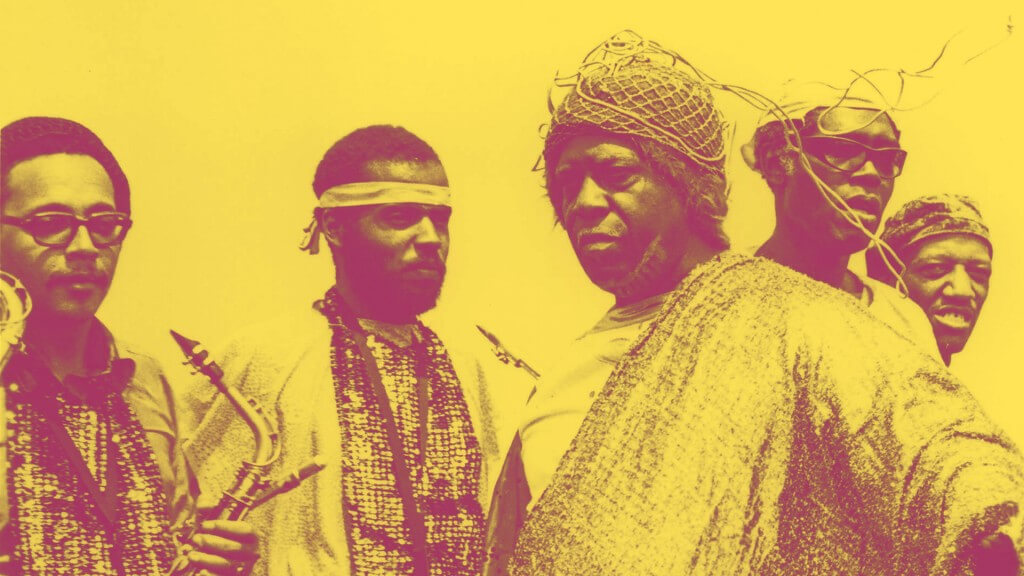
IT: I could play it at the beginning, since less people would be there.
Yeah that track is sick!
AA: Absolutely. It’s awesome for an introduction. For me, intros are really as important as the entire DJ set.
IT: But I’m thinking about playing this, I will play slow music at first:
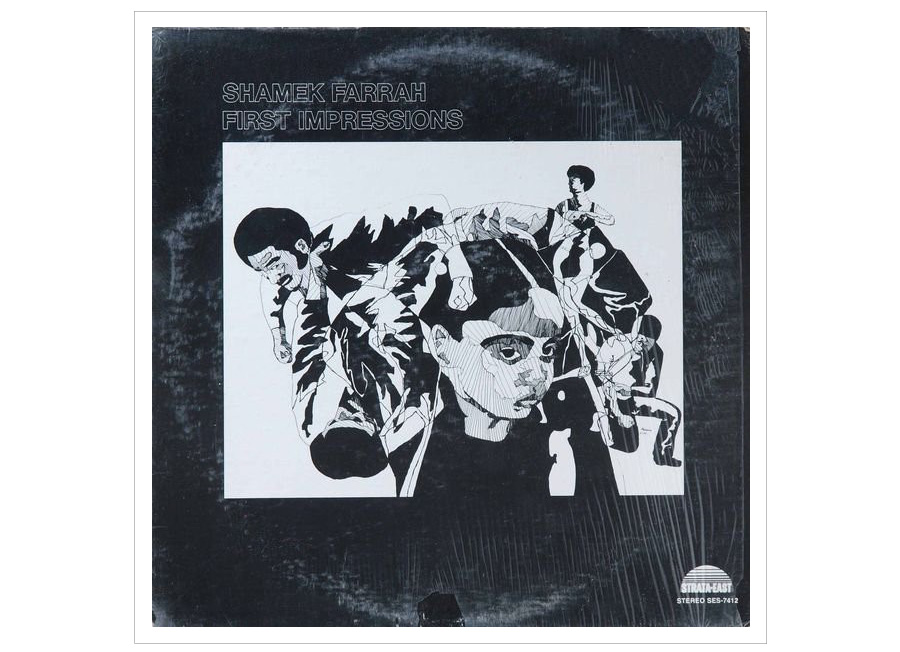
AA: I’m loving that Shamek Farrah track, man. That’s impeccable, far-out jazz.
IT: That’s a cool track from the Strata-East label. I was digging this kind of jazz when I was younger. Take a listen to this, I don’t remember where I saw this cover before:
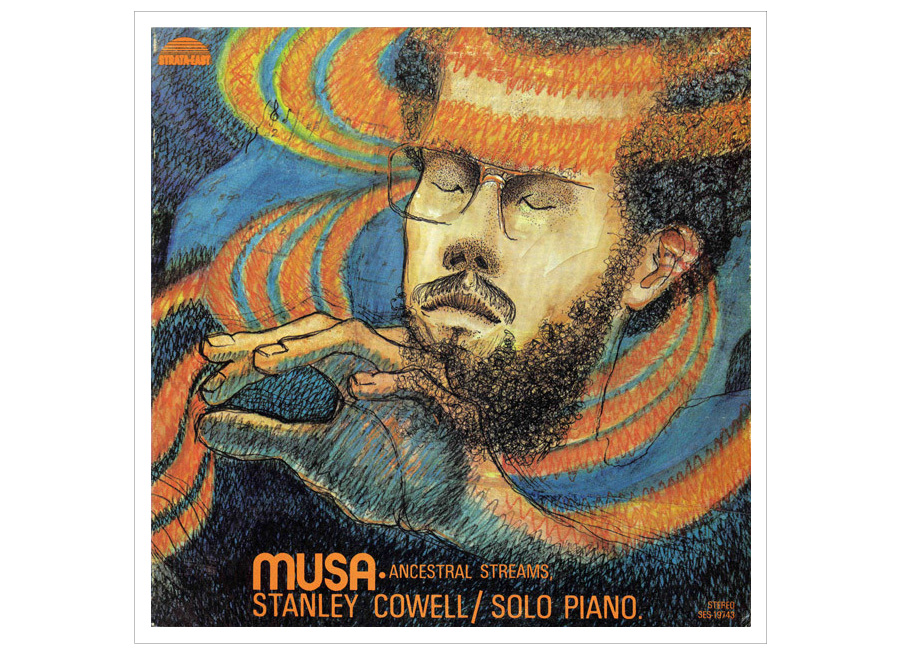
IT: It’s called «spiritual jazz» or «rare groove» in Japan.
AA: Yeah, sometimes that certain type of sound fits perfectly into the «ascension» category. Like Coltrane’s partner in life, or most of the Pharoah Sanders’s work.
IT: Yeah, Stanley Cowell was into this kind of jazz. I had this LP
AA: Those guys were something else.
IT: And this one is a pretty deep album from Mtume:

AA: What? To me Mtume was all about the synth-funk sound but they were into this type of jazz too? I haven’t heard of this other records.
IT: Yeah, the guy is famous for pop disco or something like that. But he also played other genres, I think. Also, Doug Carn and the Black Jazz records is a super nice label.
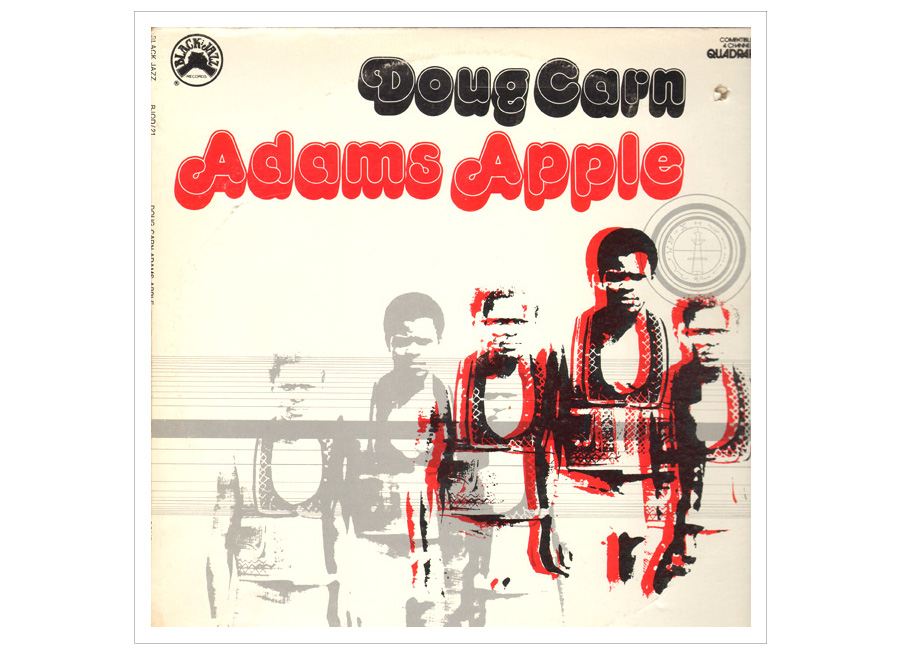
IT: I’m more than happy to talk about this kind of stuff. It was my thing back in the day, and there aren’t that many people to talk about it with…
AA: Actually, I’m not a big connoisseur of lots and lots of jazz, because it’s such a wide and extensive genre. But I’m definitely into little, tiny gray areas of the whole thing.
IT: Yeah, there are so many kinds of jazz and stuff from the ‘70s. It’s too deep to know everything.
AA: Yeah, though I’d like to someday have a general perspective of the entire thing, as with other smaller genres.
Take a listen to this, I love this blend of soul-jazz with «lyrics» or scat sounds:
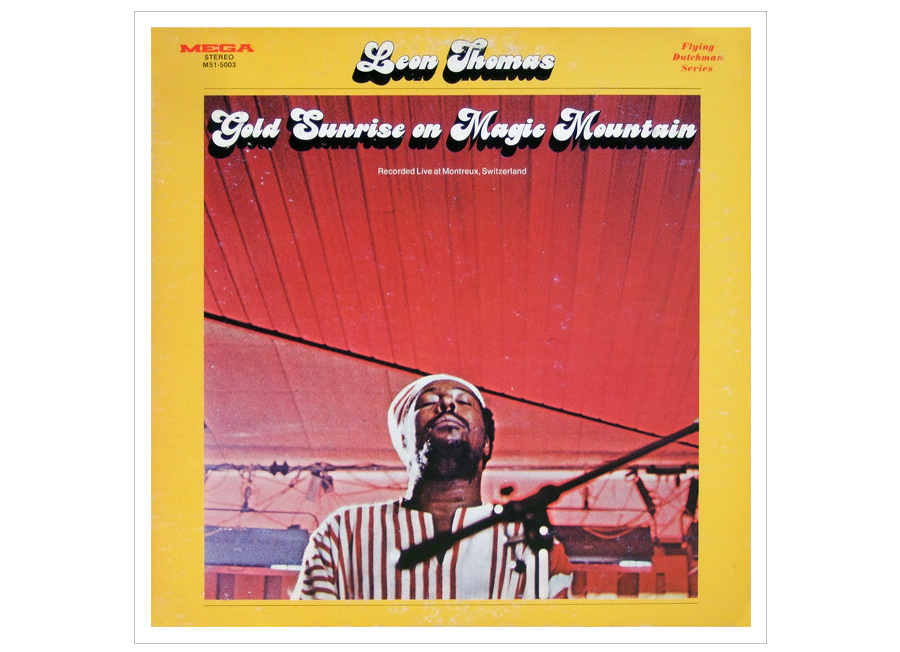
IT: I didn’t know this song, but Flying Dutchman is a great label for this kind of jazz. And the guy who is doing the crazy scat could be Leon Thomas.
- February 3rd, 2017 – 11:13 PM –
7. «DAFFETÓN AND KARAOKE PUNK IN JAPUNK»
AA: I remember once we talked about Giorgio Moroder, Chic, and all those artists coming from disco, house or techno who made influenced on (4) Daft Punk, and their own influence on later upcoming producers.
IT: I haven’t listened to Daft Punk a lot, but I know they’re talented, and I find that they are into the old, good era of disco and dance music.
AA: Yeah, I understand. Sometimes people seem to be obsessed with that sound, but not in the best ways, I mostly dig their early albums.
IT: Yeah, perhaps it was because «One-More-Time» was too much! haha
AA: Ha ha, for instance, there are some really old Thomas Bangalter tracks that are huge dancefloor bangers. The sound is really primitive, and people respond so well to it.
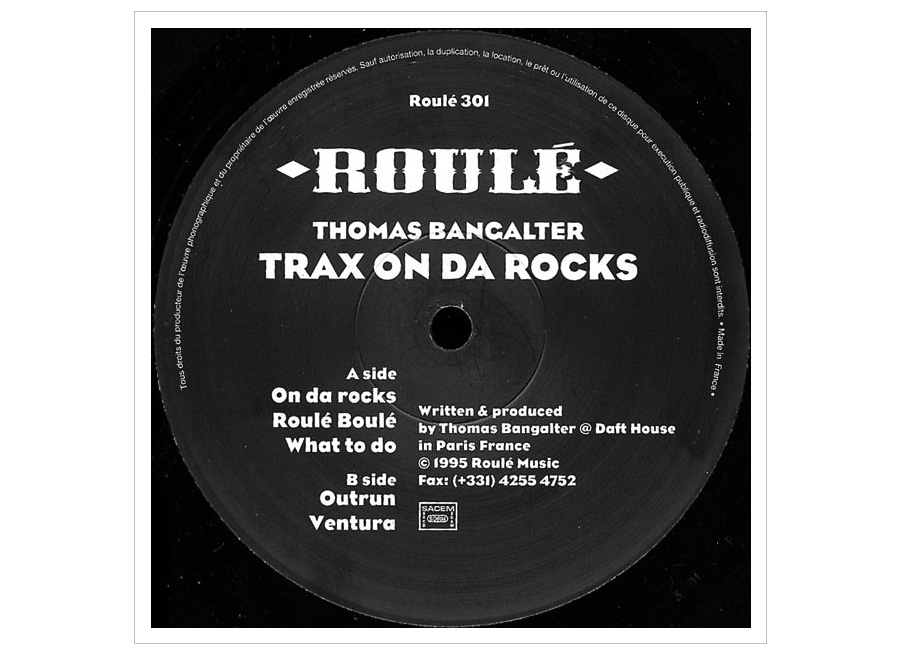
IT: When a song is being released, it’s difficult to tell about the quality of the music but later will just become popular stuff. I mean, I need time to really appreciate the song; it’s similar to how food works –if the food is still delicious even when it’s cold, then it is truly delicious.
AA: Now, that’s a point right there. This is the type of discussions I tend to have about trap or reggaeton: they have certain contemporary values, but there are things that somehow doesn’t seem to speak for a generation (or perhaps they are indeed speaking about this generation). There are certain types of dance music that you just feel they’re not going to be remembered.
Perhaps people that love a certain type of sound or artist or music right now wouldn’t seen themselves digging it in the past. With trends, it works like a time-lapse curve: people will listen to it in the present, but will think it sounds a bit «old fashioned» months later. It’s the chew-and-spit logic.
IT: Yeah, reggaeton is too hot for me to eat right now haha.
AA: Ha ha, yeah I could play it at parties, people respond really well to it, especially ladies. But with trap it’s like: Ok, i’m trying so hard to get into it.
IT: I could see myself finding some good reggaeton songs in the future, though. I especially wonder about the first person who made reggaeton; that could be interesting.
But I think your attitude regarding just giving the audience a good time is totally right. There is a famous DJ who plays soul and rare groove in Japan, but he also plays Japanese hit songs at the proper time, that’s cool.
AA: Yeah, exactly, it’s nice at the right time.
IT: But I wonder why reggaeton is so popular in South America. It could be because it’s like karaoke for the people in this continent: people drink alcohol and sing with their friends or dance whatever is playing.
AA: I understand what you’re saying, but I think it has to do mostly with people wanting to “get in touch,” to have physical contact, erm… to have sex, ha hah.
IT: Karaoke works the same way in Japan. The popular way to interact socially for a man and a woman is that they get a drink, go karaoke, and then get laid hahaha.
AA: Man, hahaha, that’s so crazy. How come karaoke plays such a key role in that situation? Weird. But I would give it a try in Japan, it sounds less noisy than a reggaeton party at least!
IT: I think it’s mainly because we don’t have salsa or other genres to dance to. There are clubs, but you go to enjoy the music, so karaoke is the best way to get close. I’ve only done it once or twice, though…
- February 3rd, 2017 – 12:09 AM –
8. «AND THEN YOU MET GIBBY HAYNES»
IT: Yes, so I went to the Fuji Rock Festival in 2003, which is a famous festival in Japan. It was a 3-day festival with Jane’s Addiction, Funkadelic, Red Hot Chili Peppers, Skatalites, and the Butthole Surfers, among others in the line-up.
AA: Sounds amazing for the year 2003. That line-up sounds more like it’s from 1993.
IT: It was pretty similar to the early beginnings of Lollapalooza, when Perry Farrell organized it.
AA: Oh, did he also put together the line-up, like in the classic editions?
IT: No, a Japanese production team put it together, he just sang and played a DJ set.
AA: Ahh, yeah, Perry Farrell had a DJ side-project which ended up sucking up a bit haha.
IT: So, on the highway back to my house, my friend found a car in front of us with the words «Gibby Haynes is in the car.» So we started chasing the car, and when they stopped at the junction to take a piss we went after him and peed together.
After taking a piss, we took a picture with Gibby Haynes! (5). Me and my friends were coincidentally wearing Funkadelic t-shirts, though, hahaha.
AA: Ha ha ha ha, that’s so cool, I think that’s one of the best stories with «famous» musicians in it that I’ve heard.
IT: The picture could be strange: Asian guys in a bathroom wearing Funkadelic t-shirts with Gibby Haynes.
AA: Yeah, if you take it out of context nobody would understand. Festivals are really good for those kinds of weird encounters.
IT: The Butthole Surfers show was so good. Gibby burnt all the cymbals classic style, with toilet paper included.
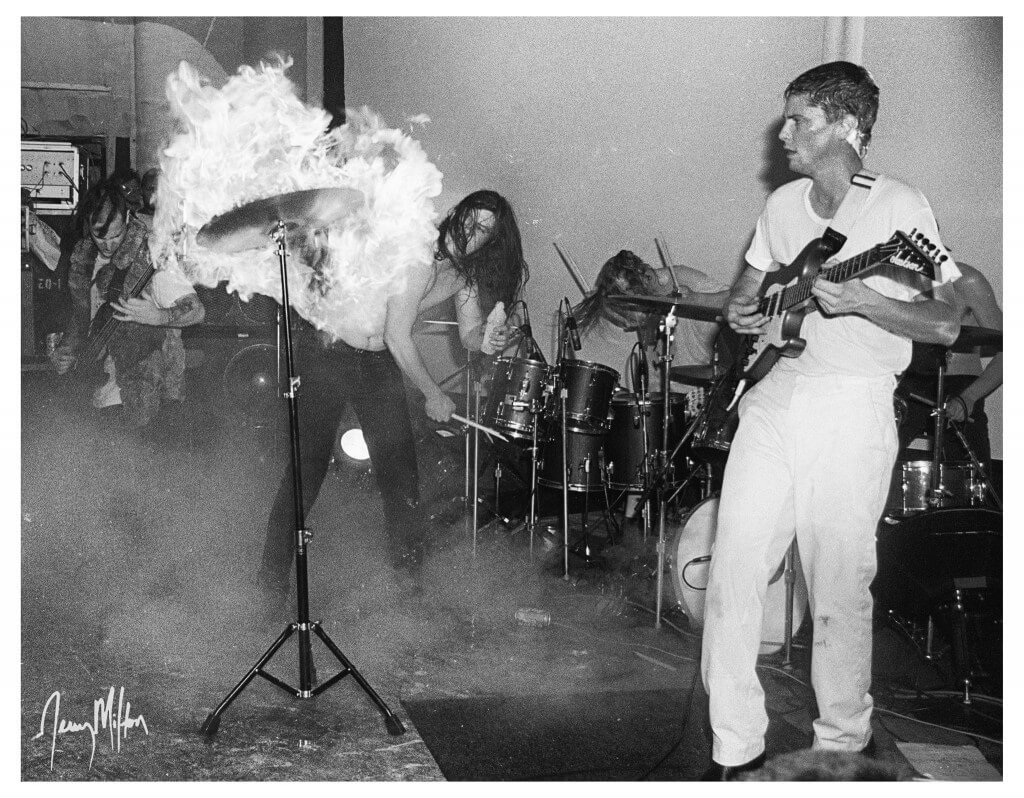
IT: The Fuji Rock Festival has been going on since 1997, and the first edition became like a legendary festival. It was also the first “big” festival in Japan, I think.
AA: Legendary in which sense? I remember there was some famous, old video footage of Boredoms playing at the Fuji Rock Festival even before Youtube, and Eye was playing an old tape machine on top of the three drummers at once.
IT: Legendary because it was the first big festival, and the promoters didn’t know how to organize that sort of major event. It was located on a mountain, but there weren’t enough buses to get people there. I spent 5 hours straight waiting for a bus, and this way you’d end up missing many bands. It was also cancelled on the day Red Hot Chili Peppers played because of a typhoon.
I walked 10 hours, all night long, to get to the station. There weren’t enough buses to return us, either, so there was a riot, with people kicking the bus and shouting.
AA: Oh, yeah, I remember you told me it was a big mess. But that sounds like the type of fun that is included between the festival attractions, haha.
IT: Even though it was summer, it was soooooo cold. I felt almost dead.
AA: Really? Yeah, I’ve seen many distant photos of a snowy Mount Fuji landscape, like the classic image.

IT: http://motai.s32.xrea.com/frf/frf97.html
AA: Lee Perry + Mad Professor, Aphex Twin, Atari Teenage Riot, Beck, and… Third Eye Blind! Hahaha, that shit’s like the Maroon 5 of 1997, man. That aside, the line-up looked incredible!
IT: The line-up looks nice, but we were only able to see Rage Against The Machine, a shitty Japanese band, and half of the RHCP show. I don’t know Maroon 5.
AA: One last thing: there’s a Japanese character that people use all over the Internet to make a «smiling face» haha: ジ What does it mean?
IT: (=^▽^=) this kind of stuff?
«ジ» is just a character of the Japanese alphabet, and a sound, and it is «JI.»
AA: Awesome! Well, see you next time, and thanks a lot, man!
¯\_(ツ)_/¯
–
Footnotes and special mentions in order of appearance:
- The album “Donuts”, written and produced by James Dewitt, better known by the stage names J Dilla and Jay Dee, edited in 2005 (by Stones Throw), was mostly composed in bed at Cedars-Sinai Medical Center in Los Angeles. A year later, in 2006, the artist would die three days after his last album’s release due to an incurable blood disease named TTP (Thrombotic thrombocytopenic purpura). The album would become a referential piece during subsequent decades, due to its characteristic “lo-fi” sound and production, and the unpredictable selection of different sampling sources, which ranged from Tin Tin, Raymond Scott and 10 CC, to more familiar names like Dionne Warwick, Stevie Wonder, Jackson 5 and The Undisputed Truth. An array of producers and musicians as varied as Animal Collective, 9th Wonder, Moodymann, Erykah Badu, Four Tet, Raekwon, Robert Glasper, Madlib, Amp Fiddler, Janet Jackson, Mos Def, D’ Angelo and Questlove, associated or not with hip-hop, have been linked, in one way or another, to the extensive body of work of J Dilla. Even Flea, bassist of Red Hot Chili Peppers, shed a tear speaking about him in an episode of the online series What’s In My Bag? (https://youtu.be/BVljTwZzonA?t=385), which features musicians sharing their discoveries while shopping at the renowned independent music store Amoeba Music in Los Angeles.
- Masami Akita, better known by his stage name Merzbow, is a prolific Japanese musician with an active career since 1979. Pioneer of harsh noise as musical expression, he has released over 452 albums to date (exceeding Elvis), creating aesthetic relations between the legacy of the dadaist piece “Merzbau”, by Kurt Schwitters, free-jazz structures of composition, BDSM culture, japanese bondage, and, most recently, vegan activism.
- Can was a German experimental rock band formed in Cologne, West Germany, in 1968. The band has been widely hailed as pioneer of the German krautrock scene. Its drummer, the acclaimed Jaki Liebezeit, passed away on January 22th of 2017.
** There have often existed missing links between musical genres that on the surface may appear unconnected. In this case, jazz and funk collide in history by way of two musical monoliths, such as the well-known Funkadelic / Parliament troupe, led by George Clinton, who has often cited composer Sun Ra and The Arkestra as a reference, not only for his philosophical and musical legacy (full of mysticism and afro-futurism theory), but especially for the versatile designs of his constantly changing outfits and his various stagings during live performances.
- 4.»Teachers», a track produced and written by Guy-Manuel de Homem-Christo and Thomas Bangalter, also known as Daft Punk (included on their first 1996 album «Homework»), has a repetitive, fun, and simple structure that namechecked as a tribute (through the synthesized sound of a Vocoder) an extensive list of influences: DJs and pioneering producers of house, techno, disco, and everything related to Dance music culture of the mid-’90s . “Teachers” mentions people like Jeff Mills, Louie Vega, Kenny Dope, Green Velvet, and even Dr. Dre and the lead singer of The Beach Boys, Brian Wilson. January 17th of 2017 marked the 20th anniversary of its release date, and Boiler Room, the music streaming platform, hosted «Teachers: A Chicago Tribute to Daft Punk«: a celebration in honor of the song, the album … and the group, which brought together at least seven of the DJs mentioned on the hilarious track.
- Gibby Haynes is the lead singer of the legendary, incendiary, and simply epopheic band, brilliantly known as the Butthole Surfers. In 1996, the single «Pepper», considered their only «hit» ever, topped the musical charts thanks to MTV (even today, the song could be heard in various awful bars around Caracas). Among other things, Gibby has gained notoriety through the many endless legends written during the band’s live performances; one of them is an infamous episode in which the band mistakenly shared half of an LSD tablet with the famous illustrator and singer-songwriter Daniel Johnston (already known for his erratic behaviour and unstable personality) while burning the remains of the drum kit on stage.






